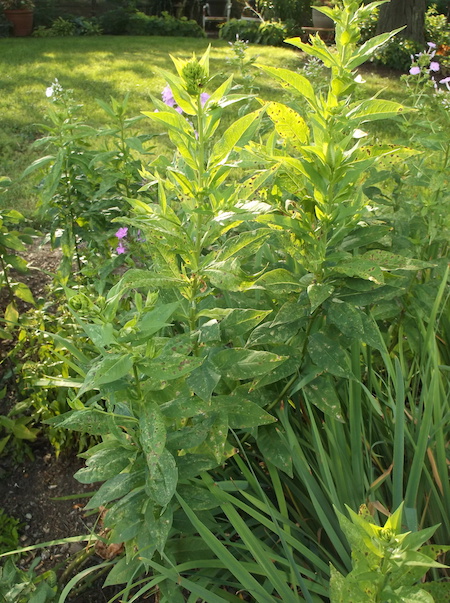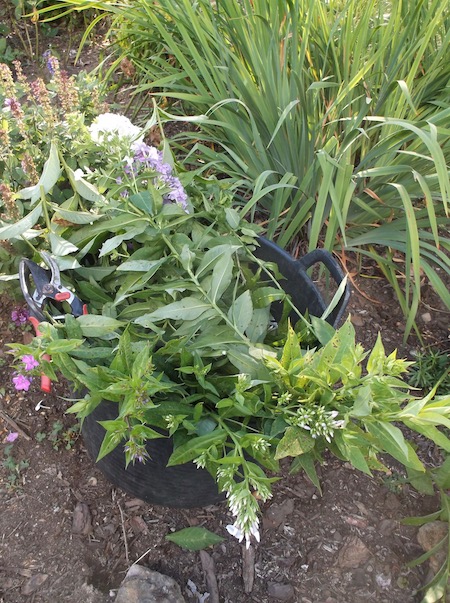
A sneaky fungus disease has attacked my stand of garden phlox. The leaves went from clean one day to spotty the next. This is the first time septoria has shown up on the garden phlox (P. paniculata). Usually the disease on phlox is powdery mildew, another fungus. Septoria is common on tomatoes, however.
Cornell University Extension on Long Island, New York, recommends scouting plants regularly to spot an early infestation of the disease and to begin treatment immediately. Water early in the day to allow leaves to dry faster. Consider spacing plants farther apart to allow for better air circulation. Remove any badly spotted plants. Some garden phlox varieties may be more resistant to disease than others.
Weather related
“I think this happens when you have a combination of a really wet spring and then a super hot summer. I had it on a few plants last year,” said Angela Treadway-Palmer, co owner of Plants Nouveau, which has introduced several garden phlox.
“Since it is hard to know when that is going to happen, these diseases sneak up on you. It’s hard to prevent. I’ve only had it happen a few times,” she said.
Cut back the plants
Treadway-Palmer recommends cutting the phlox back this time of year to about 6 inches high. The plants will still bloom, but later in the summer.
Once cut back they can be sprayed with a fungicide labeled for septoria, if desired, but that may not be necessary.
Fall cleanup will be important, even though this fungus disease is not soil borne, but rather can be carried in by wind, insects and other environmental carriers.

Can this be on echinacea? My phlox looks ok this summer, but I have two separate groups of purple coneflower that look awful. First time I’ve ever seen the dark brown spots on the foliage like this. Thank you!
Hi, Laura — it’s hard to know w/o seeing a photo. See if this link has info that describes your plants. https://homeguides.sfgate.com/diseases-echinacea-purpurea-69982.html